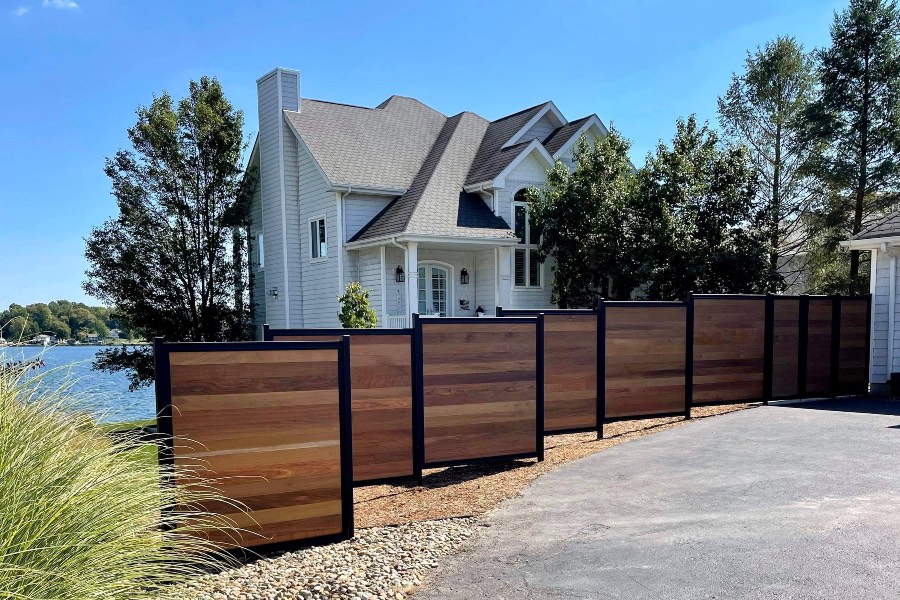All Categories
Featured

Your fencing is an important part of your residential or commercial property, providing visual, personal privacy, and protection allure. Nonetheless, it is continuously revealed to the elements, and in time, weather-related damages can take its toll. Whether it's the severe sunlight, solid winds, hefty rain, or freezing temperature levels, the climate can trigger deterioration, warping, rotting, and fading. There are numerous methods you can execute to secure your fence and lengthen its life.
- Select the Right Material. The very first step in securing your fence from weather-related damage is to pick the ideal material for your climate. Some products are more resistant to the aspects than others.
Wooden Fencings: While standard wood fencings offer an all-natural, eye-catching look, they are specifically at risk to water damage, pest, and rot invasion. Such as cedar or redwood if you select timber, choose pressure-treated lumber or timber kinds that are a lot more immune to wetness. Plastic Fences: Plastic is a low-maintenance alternative that resists fading, fracturing, and warping. It's likewise unsusceptible to rot and pests, making it excellent for locations with high moisture or direct exposure to rain. Steel Fences: Aluminum and functioned iron fencings are resilient and immune to weathering. They can corrosion if revealed to moisture for extensive durations. Choose a powder-coated or galvanized steel fence to lower the risk of deterioration. Composite Fences: These are made from a mix of wood fibers and plastic, using the very best of both globes-- durability and an all-natural look. Compound fences are resistant to moisture, fading, and decaying, making them excellent for environments with regular rain or snow. 2. Apply Safety Coatings. Despite the product, applying a protective covering can help safeguard your fence from weather damages.

Wood Fences: A good-quality discolor or sealant can aid secure your wood fencing from wetness, UV rays, and bugs. These finishes create an obstacle that avoids water from leaking right into the timber and creating rot. You ought to apply a fresh layer of sealer every couple or tarnish of years, relying on your environment and the degree of exposure to rain and sunshine. Plastic Fences: Although plastic fences are normally resistant to weathering, they can still deal with staining due to the sun's UV rays. You can use customized vinyl cleansers or UV protectants to preserve the shade and look of your fence. Steel Fences: For metal fencings, think about using a rust-resistant primer and a layer of paint made for outdoor usage. Powder covering is an additional superb alternative for metal fencings, as it develops a long lasting, weather-resistant surface that withstands rust and rust. 3. Routine Cleansing and Upkeep. Maintaining your fencing consistently is essential to stopping damages from the elements. Dirt, leaves, and various other particles can develop on your fence, which can cause staining, mold, and mold with time.
Wood Fencings: Clean your wood fencing every six months with a mild cleaning agent service or a pressure washer (on a reduced setup) to remove dirt and gunk. Watch out for very early indicators of rot, particularly at the base of the fence messages where moisture tends to collect. Vinyl Fencings: Vinyl fencings are easy to tidy with soap and water. If you see mold and mildew or mildew, utilize a combination of vinegar and water to gently scrub the influenced areas. Stay clear of extreme chemicals that might damage the surface. Steel Fences: Routinely clean steel fences with a soft cloth or sponge to eliminate rust-causing particles. For wrought iron fencings, think about applying a rust-inhibiting item to stop rust. 4. Correct Installment and Positioning. Proper installment of your fencing can go a lengthy means in securing it from weather-related damage. Make sure that your fencing is firmly anchored which articles are set deep enough right into the ground to avoid moving during hefty winds or storms. If your fence is subject to heavy winds, installing supporting at crucial points can give added assistance.
Furthermore, think about the positioning of your fencing. Plant hedges or trees purposefully around your fence to offer some natural security from extreme winds, extreme sunlight, or motoring rain if feasible. Be mindful not to plant as well close to the fence, as origins can damage or move blog posts over time.
- Address Tornado Damages Rapidly. Tornados, especially those with high winds or hailstorm, can trigger prompt damages to your fencing. After a tornado, examine your fencing for busted areas, leaning blog posts, or fallen debris.
- Winterize Your Fence. Cold temperatures and ice can be specifically harming to wooden fencings. To avoid this, make sure that the base of your fence messages is elevated and not sitting in pooled water.
Final thought. Weather-related damages is an inescapable component of possessing a fencing, but with the ideal safety measures and routine maintenance, you can substantially expand the life of your fencing. Select resilient materials fit for your climate, apply protective coverings, clean regularly, and make certain correct setup. With these steps, you can shield your fence from the aspects and maintain its look and capability for years to find.
Latest Posts
Discover Reduce Expenses on Car Maintenance with Montclare Auto Repair’s Exclusive Deals
Published May 29, 25
1 min read
Explore Montclare Auto Repair’s Premier Auto Repairs and Why Drivers Rely On Them
Published May 22, 25
1 min read
Full Circle Strategic Marketing's Comprehensive Approach to Market Solutions
Published May 20, 25
1 min read
More
Latest Posts
Discover Reduce Expenses on Car Maintenance with Montclare Auto Repair’s Exclusive Deals
Published May 29, 25
1 min read
Explore Montclare Auto Repair’s Premier Auto Repairs and Why Drivers Rely On Them
Published May 22, 25
1 min read
Full Circle Strategic Marketing's Comprehensive Approach to Market Solutions
Published May 20, 25
1 min read